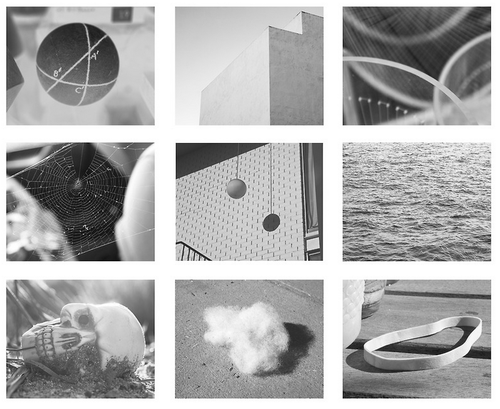
The Los Angeles-based press The Ice Plant, run by Mike Slack and Tricia Gabriel, is among small presses currently turning out photography books that are more manuscript than monograph. Aside from co-managing The Ice Plant, Slack is a photographer who up until this point has worked mostly in Polaroid, producing a series of books that ask to be read despite their lack of text.
I walked up to the Ice Plant booth at the LA Art Book Fair this April and Believer illustrations editor Jason Polan said hey and introduced me to Mike Slack. Mike Slack showed me a picture of a dome in Casa Grande. Over the next few months we emailed one another.
—Bucky Miller
I. THE PERCEPTION ENHANCER
THE BELIEVER: When I ran into you at the LA Art Book Fair you were having a conversation about some black and white laser prints that you made and were selling in unlimited editions for five dollars each. You said that you might go print more that night if something sold out. It’s a total contrast to the unique-object Polaroid prints that you’ve made in the past, but the aesthetic of the pictures has stayed relatively constant. What were the major catalysts for your shift in process?
MIKE SLACK: Those prints were made quickly and cheaply while I was doing something else—we needed a big poster for The Ice Plant’s space at the Fair and at the last minute I added a few of the pictures I’d been playing with earlier in the week. I liked the effect – distressed, dreamy, Xerox-like – cranked out a few more, cut them into a stack of smaller posters to sell at our table, then kept going back to print more as they sold. I’ve been staring at all these new digital photographs the last few months—scrutinizing the pictures in super-hi-res full color on a bright backlit screen, correcting, adjusting, controlling, etc—so the lo-fi effect of those laser prints, with all their flaws & variations, was really liberating.
The more radical shift—using a digital camera after a ten year affair with the Polaroid—began a few years ago as the 600 film was becoming obsolete and my cameras had all seen better days. Whatever I was doing in that format felt complete, more or less, and the charm of its limitations was wearing off. The routine of making pictures is not so different now—I’m attracted to similar subjects, spaces, feelings, ideas, using the camera as a kind of meditation device or perception enhancer—but turning these lifeless electronic “files” into alluring physical objects is a different process with its own pattern of trial, error, experimentation.
BLVR: I like...
You have reached your article limit
Sign up for a digital subscription and continue reading all new issues, plus our entire archives, for just $1.50/month.
Already a subscriber? Sign in




